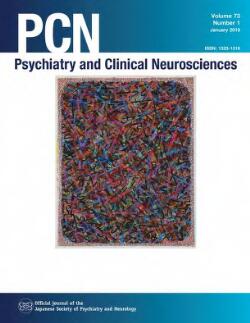加速度计测量的昼夜节律--休息--活动节奏、大脑结构和遗传机制与痴呆症之间的关系
IF 5
3区 医学
Q1 CLINICAL NEUROLOGY
引用次数: 0
摘要
目的对昼夜节律如何影响大脑健康的了解仍然有限。我们的目的是调查加速度计测量的昼夜节律与痴呆症、认知功能障碍和大脑结构异常之间的关系,以及潜在的生物学机制。方法纳入了5.752万名60岁以上、拥有加速度计数据的参与者,调查昼夜节律与痴呆症之间的关系。研究采用了非参数CRAR参数,包括一天中活跃期的活动水平(M10)、一天中休息期的活动水平(L5)以及M10和L5之间的相对差异(相对振幅,RA)。在一部分参与者中研究了 CRAR 与认知功能障碍和大脑结构的关系。结果在6.86(4.94-8.78)年的随访中,494名参与者患上了痴呆症。痴呆症发病风险与M10下降(危险比[HR]1.45;95%会议区间[CI],1.28-1.64)和RA下降(HR 1.37;95% CI,1.28-1.64)、L5上升(HR 1.14,95% CI 1.07-1.21)和L5发病时间提前(HR 1.12;95% CI,1.02-1.23)有关。APOE ε4状态和年龄(65岁)加剧了这些不利关联。RA降低与处理速度降低有关(Beta -0.04;SE 0.011),主要由皮层下区域和白质微结构异常介导。与 CRAR 相关的大脑区域结构变异的基础基因富含突触功能。本文章由计算机程序翻译,如有差异,请以英文原文为准。
Associations between accelerometer‐measured circadian rest‐activity rhythm, brain structural and genetic mechanisms, and dementia
AimKnowledge of how circadian rhythm influences brain health remains limited. We aimed to investigate the associations of accelerometer‐measured circadian rest‐activity rhythm (CRAR) with incident dementia, cognitive dysfunction, and structural brain abnormalities in the general population and underlying biological mechanisms.MethodsFifty‐seven thousand five hundred and two participants aged over 60 years with accelerometer data were included to investigate the association of CRAR with incidental dementia. Non‐parametric CRAR parameters were utilized, including activity level during active periods of the day (M10), activity level during rest periods of the day (L5), and the relative difference between the M10 and L5 (relative amplitude, RA). Associations of CRAR with cognitive dysfunction and brain structure were studied in a subset of participants. Neuroimaging‐transcriptomics analysis was utilized to identify the underlying molecular mechanisms.ResultsOver 6.86 (4.94–8.78) years of follow‐up, 494 participants developed dementia. The risk of incident dementia was associated with decreasing M10 (hazard ratio [HR] 1.45; 95% conference interval [CI], 1.28–1.64) and RA (HR 1.37; 95% CI, 1.28–1.64), increasing L5 (HR 1.14, 95% CI 1.07–1.21) and advanced L5 onset time (HR 1.12; 95% CI, 1.02–1.23). The detrimental associations were exacerbated by APOE ε4 status and age (>65 years). Decreased RA was associated with lower processing speed (Beta −0.04; SE 0.011), predominantly mediated by abnormalities in subcortical regions and white matter microstructure. The genes underlying CRAR‐related brain regional structure variation were enriched for synaptic function.ConclusionsOur study underscores the potential of intervention targeting at maintaining a healthy CRAR pattern to prevent dementia risk.
求助全文
通过发布文献求助,成功后即可免费获取论文全文。
去求助
来源期刊
CiteScore
7.40
自引率
4.20%
发文量
181
审稿时长
6-12 weeks
期刊介绍:
PCN (Psychiatry and Clinical Neurosciences)
Publication Frequency:
Published 12 online issues a year by JSPN
Content Categories:
Review Articles
Regular Articles
Letters to the Editor
Peer Review Process:
All manuscripts undergo peer review by anonymous reviewers, an Editorial Board Member, and the Editor
Publication Criteria:
Manuscripts are accepted based on quality, originality, and significance to the readership
Authors must confirm that the manuscript has not been published or submitted elsewhere and has been approved by each author

 求助内容:
求助内容: 应助结果提醒方式:
应助结果提醒方式:


